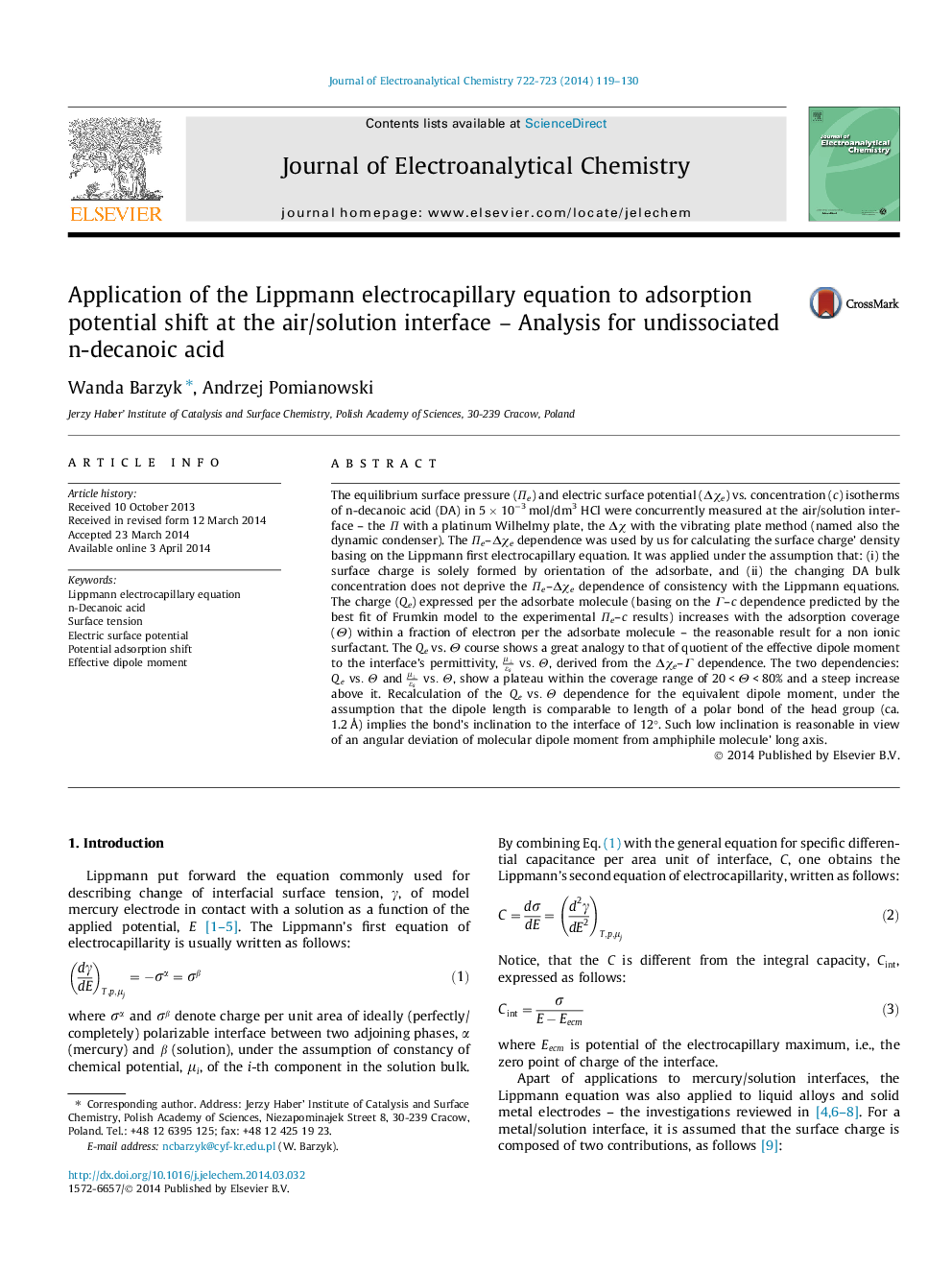| Article ID | Journal | Published Year | Pages | File Type |
|---|---|---|---|---|
| 218781 | Journal of Electroanalytical Chemistry | 2014 | 12 Pages |
•Simultaneous measurement of surface pressure and electric potential of free solution surfaces.•The surface charge evaluated by differentiating the surface pressure vs. potential course.•Differential capacity of the air/solution interface exceeds that measured on mercury electrode.•Charge and effective dipole moment of the monolayer increase with the coverage, consistently.•The surface charge corresponds to a dipole formed by a bond of –COOH group.
The equilibrium surface pressure (Πe) and electric surface potential (Δχe) vs. concentration (c) isotherms of n-decanoic acid (DA) in 5 × 10−3 mol/dm3 HCl were concurrently measured at the air/solution interface – the Π with a platinum Wilhelmy plate, the Δχ with the vibrating plate method (named also the dynamic condenser). The Πe–Δχe dependence was used by us for calculating the surface charge’ density basing on the Lippmann first electrocapillary equation. It was applied under the assumption that: (i) the surface charge is solely formed by orientation of the adsorbate, and (ii) the changing DA bulk concentration does not deprive the Πe–Δχe dependence of consistency with the Lippmann equations. The charge (Qe) expressed per the adsorbate molecule (basing on the Γ–c dependence predicted by the best fit of Frumkin model to the experimental Πe–c results) increases with the adsorption coverage (Θ) within a fraction of electron per the adsorbate molecule – the reasonable result for a non ionic surfactant. The Qe vs. Θ course shows a great analogy to that of quotient of the effective dipole moment to the interface’s permittivity, μ⊥εsvs.Θ, derived from the Δχe–Γ dependence. The two dependencies: Qevs.Θ and μ⊥εsvs.Θ, show a plateau within the coverage range of 20 < Θ < 80% and a steep increase above it. Recalculation of the Qevs.Θ dependence for the equivalent dipole moment, under the assumption that the dipole length is comparable to length of a polar bond of the head group (ca. 1.2 Å) implies the bond’s inclination to the interface of 12°. Such low inclination is reasonable in view of an angular deviation of molecular dipole moment from amphiphile molecule’ long axis.
